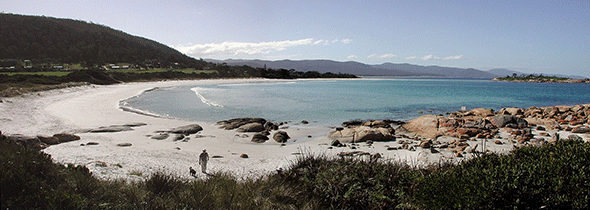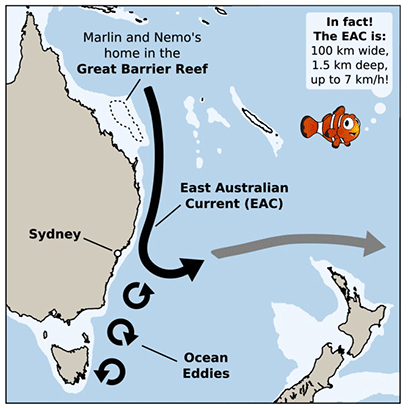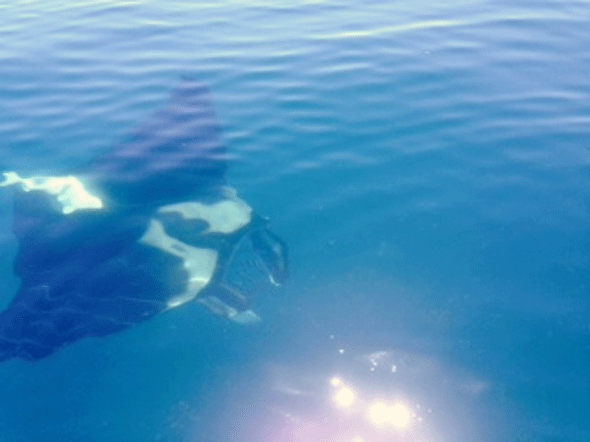
|
Published: 23 July 2012
Leadership and prompt action could save species
Failure to act quickly on evidence of rapid population decline led to the first mammal extinction in Australia in the last 50 years, the Christmas Island pipistrelle (Pipistrellus murrayi), in 2009. The fate of another iconic species, the migratory orange-bellied parrot (Neophema chrysogaster), hangs in the balance.
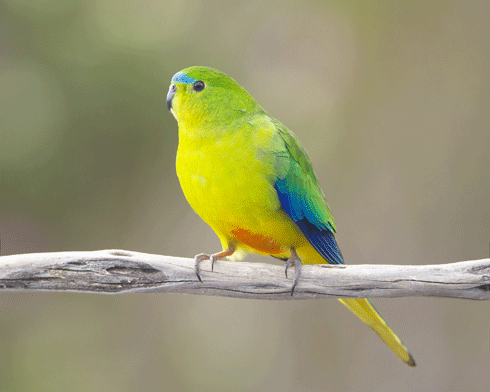
|
|
Prompt action to augment an ‘insurance’ population of orange-bellied parrots in 2010 ensured the species still has a chance of evading extinction. Credit:
John Harrison
|
To understand what led to the bat’s demise so that we can apply this knowledge to safeguarding other species, we analysed the decision process underlying the management of both species. We came up with three recommendations for minimising species extinction worldwide:
-
informed, empowered, and responsive leadership is essential;
-
responsible institutions must be held to account; and
-
decisions must be made while there is an opportunity to act.
The bottom line is that, unless responsive and accountable institutional processes are in place, decisions will be delayed and extinctions will occur.
The Christmas Island pipistrelle
The Christmas Island pipistrelle was a tiny (3.5 g) insect-eating bat endemic to Christmas Island, an Australian external territory 1500 km north-west of Australia in the Indian Ocean.
When first described in 1900, the bat was considered widespread and abundant and subsequent observations suggest it remained common until 1984. From 1994 onwards, monitoring revealed a consistent and rapid decline in population size until its extinction in 2009. Did we manage to monitor a species to extinction?
A Christmas Island Pipistrelle Recovery Plan published in 2004 revealed a complex web of potential threats, with no single factor accounting for the species decline.
Even today, the precise cause of the decline remains unknown but was likely the result of a ‘cascade’ of negative impacts. Chief among them was colonisation of the bat’s habitat by a suite of invasive species, including the giant centipede, common wolf snake, yellow crazy ant and black rat. Disease and habitat loss are other possible factors.
By 2006, it was clear that trying to save the species in the wild was not going to succeed. Researchers and groups such as the Australian Mammal Association and Australasian Bat Association called on the Federal Minister of Environment to commence a captive breeding program. Over the next three years, these pleas continued. Meanwhile, monitoring in 2008 revealed a 99 per cent decline in the population size from 1994.
Finally in July 2009, after further warnings in January of that year that the species would disappear if urgent action was not taken to capture the last few remaining bats and commence a captive breeding program, the Minister gave the green light. Two months later, he announced the rescue attempt had failed.
The orange-bellied parrot
Estimates from the 1800s to early 1910s suggest the migratory orange-bellied parrot was common across its breeding range in Tasmania and its wintering range in southern Victoria and South Australia. By 1917, concerns were being raised over the parrot’s decline and a survey across the species’ entire range in 1981 confirmed it was on the brink of extinction.
The government established a multi-agency, multi-government recovery team in 1983 that included members from universities and non-government organisations. A trial captive breeding population was set up in 1986, increasing to around 170 birds in 1989.
In April 2009, the Orange-bellied Parrot Recovery Team expressed concern about the state of the species in the wild and commenced collating and analysing all available monitoring data. In March 2010, it became evident that, unless drastic action was taken, the species would become extinct in the wild within 3–5 years. The recovery team decided to bolster captive population numbers to create a more robust insurance population for release in the wild once threats had been identified and managed. The team members began implementing the decision, including the capture of two new juvenile founders, within a single day!
Within three weeks, the recovery team had drafted an action plan to form an insurance population, which was endorsed and supported by state and federal environment ministers. The federal government committed further resources to implementation of the plan. Over the 2010-2011 breeding season, researchers captured a further 21 juveniles from the wild to increase genetic diversity within the insurance population.
Lessons for the future
What lessons can we learn from these two case studies? Our analysis of the respective decision-making processes revealed that, in both cases, researchers delivered the information on species decline to decision-makers and promoted recommendations for action.
The differences lay in the way the information was promoted and implemented. The orange-bellied parrot had a champion in the form of an active recovery team to guide species management and ensure recommendations were turned into action. Team members included leading experts on the species and representatives from relevant government agencies and non-government organisations. The team was informed, had a history of credible action and advice, and was willing to respond. Recommendations were based on the best available science, and were implemented quickly and faithfully.
In the case of the Christmas Island pipistrelle, the information conveyed by researchers and members of the Australasian Bat Society, the Australian Mammal Society, the statutory Threatened Species Scientific Committee and others did not lead to a decision until it was too late.
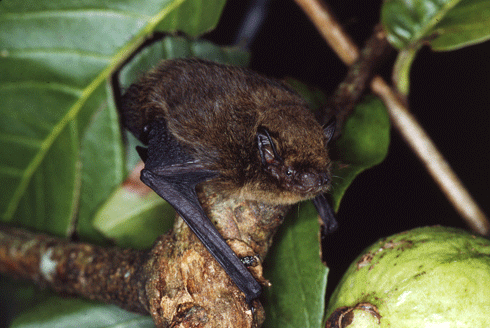
|
|
Little bat lost: The Christmas Island pipistrelle silently left the world in 2009 – a last-minute approval for a captive breeding program proved too little, too late. Credit:
Lindy Lumsden
|
Leadership has emerged as a critical component of endangered species’ protection and recovery. Good leadership can ensure that policies are turned into actions and actions are implemented in a timely and appropriate manner.
From these sobering accounts of species decline, loss and decision making, we offer the following recommendations:
1. Informed, empowered, and responsive governance and leadership is essential. Where legislation provides for the conservation of endangered species, responsibility lies with government. Leadership is the ability to inspire and mobilise others to achieve purposeful change and is a component of governance.
Central to the outcomes for both the Christmas Island pipistrelle and the orange-bellied parrot was the difference in governance and leadership between the two cases. While knowledge about the parlous state of the pipistrelle was available, as were expert recommendations, the individuals involved had no authority to make decisions, nor was there an effective leader to champion the urgent need to act. Thus a decision to act was not taken. Further, the internal decisions that resulted in no action were not visible, and there was no consistent body with expert and public membership involved in guiding decisions.
In the case of the orange-bellied parrot, the authority to make informed management recommendations resided in a single body, the Orange-bellied Parrot Recovery Team. The team was recognised by the States and Commonwealth, and contained the necessary expertise on the parrot’s biology, ecology, threats and management. It took responsibility for collating and analysing information, adaptively determining actions, coordinating activity, and advising the community and governments of the actions that were required.
As the team included representatives from NGOs and the community, any failure to act would have drawn a public response. This collective authority provided governments with confidence to make decisions based on biological evidence and on evidence that there was scientific, jurisdictional and community support. The recovery team model also enabled an ongoing commitment of resources including leveraging urgent investment of additional resources when required. Thus an effective leadership team – in this case, the Orange-bellied Parrot Recovery Team – has been a central ingredient in the species’ persistence.
2. Processes that ensure institutional accountability must be in place. In both cases, monitoring indicated that population declines continued, despite action being taken to abate threats. Eventually, only two options remained: do nothing, or establish captive insurance populations.
Both recovery plans included objectives and actions to monitor and undertake research to better understand the cause of the declines, but only the parrot’s recovery plan contained specific recommendations for action. Recovery plans must specify or include requirements to generate triggers to transform monitoring into action and institutions must be accountable for ensuring these actions are carried out.
Monitoring should be undertaken within an adaptive management framework, whereby explicitly stated actions will be taken when certain events occur.
3. Decisions must be made while there is opportunity to act. Delaying decisions removes opportunities to act and runs the risk that a species may go extinct. The orange-bellied parrot would almost certainly have followed the Christmas Island pipistrelle to extinction if the decision to augment the captive population had not been made and acted upon immediately.
In the case of the pipistrelle, failure to act immediately on the 2006 information about a critical population decline likely contributed to the species’ extinction. Such delayed decision-making has been cited as a key contributor to the failure of other endangered species’ recovery programs.
We are only too aware that insufficient conservation resources exist to manage all endangered species and, without more investment, difficult decisions about how to allocate resources between species must be made. It is conceivable, in the case of the Christmas Island pipistrelle, that the appropriate decision may have been to do nothing because of a perceived low likelihood of success relative to the cost of management and limited resources that could be better allocated elsewhere. However, no such decision process was apparent. In the case of the orange-bellied parrot, extinction was pre-empted in the short term by a timely decision to augment the captive-bred population.
What is clear from this analysis is that stemming the global loss of biodiversity through recovery planning will require brave decision-making in the face of uncertainty. Informed, responsive governance has many faces, from a single empowered agency to a multi-organisation recovery team.
Finally, monitoring must be linked to decisions, institutions must be accountable for these decisions, and decisions to act must be made before critical opportunities, and species, are lost forever.
Dr Tara Martin is a senior scientist with CSIRO Sustainable Ecosystems and Adjunct Professor at the University of Queensland and University of British Columbia, Canada. This research was conducted with the support of funding from CSIRO, the Australian Government’s National Environmental Research Program and the Australian Research Council Centre of Excellence for Environmental Decisions.
This is an edited version of an article published in Decision Point, June 2012, volume 60, pages 6-9.
More information:
Martin TG, S Nally, A Burbidge, S Arnall, ST Garnett, MW Hayward, LFLumsden, P Menkhorst, E McDonald-Madden & HP Possingham (2012). Acting fast helps avoid extinction. Conservation Letters doi:10.1111/j.1755-263X.2012.00239.x


